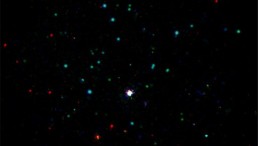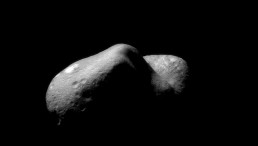With the Solar System being nearly 3.8 billion years old, it's not so much a stretch to imagine one of our sister planets once being habitable. Take our current situation with climate change for example, it is extremely likely that other planets experienced such changes and are now rendered "inhabitable" because of them. Mars, in particular, has often been considered man's next colonial option with space programs working towards first colonial expeditions to the Red Planet. We already have evidence of ancient rivers and lakes on Mars as well as a possible ocean bed and other possible signs of life hosting elements. In addition, NASA has recently received evidence further validating the possibilities of Mars once being habitable.
A new study has revealed asteroid impacts on ancient Mars could have produced ingredients for life if Mars' atmosphere was rich in hydrogen. Researchers on Curiosity's Sample Analysis at Mars (SAM) said a hydrogen-rich atmosphere would explain how the planet was once habitable. The ingredients are nitrites and nitrates. Both nitrites and nitrates are important to establish and sustain life. The rover discovered both ingredients in soil and rock samples within the Gale Crater which is the site of ancient lakes on Mars.
Researchers recreated the early Martian atmosphere to understand how fixed nitrogen may have been deposited in the crater. They found that the Red Planet may have been warmer in the past. Dr. Rafael Navarro-González said: "The big surprise was that the yield of nitrate increased when hydrogen was included in the laser-shocked experiments that simulated asteroid impacts. This was counterintuitive as hydrogen leads to an oxygen-deficient environment while the formation of nitrate requires oxygen. However, the presence of hydrogen led to a faster cooling of the shock-heated gas, trapping nitric oxide, the precursor of nitrate, at elevated temperatures where its yield was higher."
Climate models show hydrogen in the atmosphere is necessary to raise temperatures to have liquid at the planet's surface. Christopher McKay explained the presence of nitrate is of "major astrobiological significance." He said, "Because of the low levels of nitrogen gas in the atmosphere, nitrate is the only biologically useful form of nitrogen on Mars. Thus, its presence in the soil is of major astrobiological significance."
With that being said, let us still try to remember that once being habitable or any slight possibility of an atmosphere that could host life and actually hosting life are two completely different scenarios.














